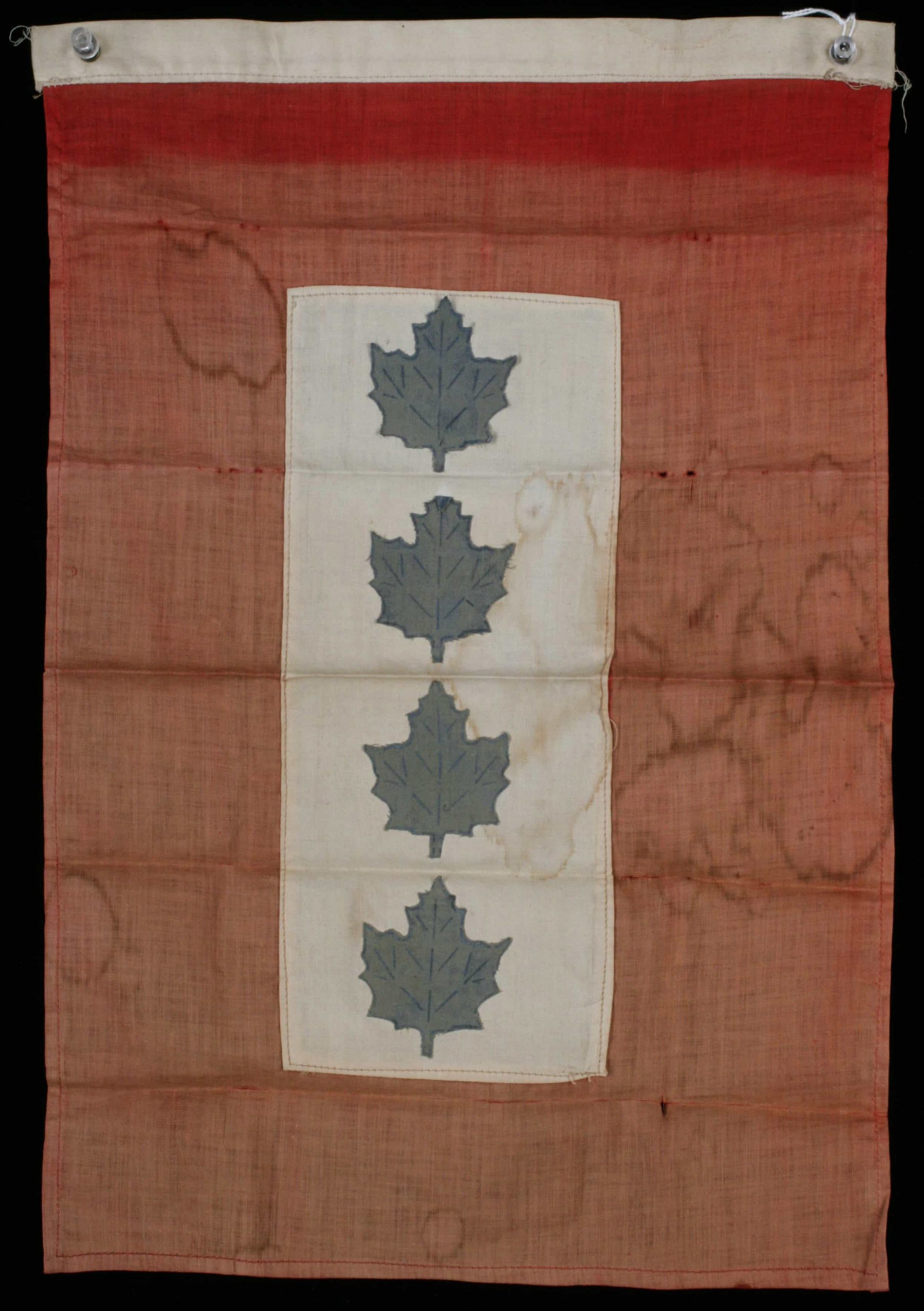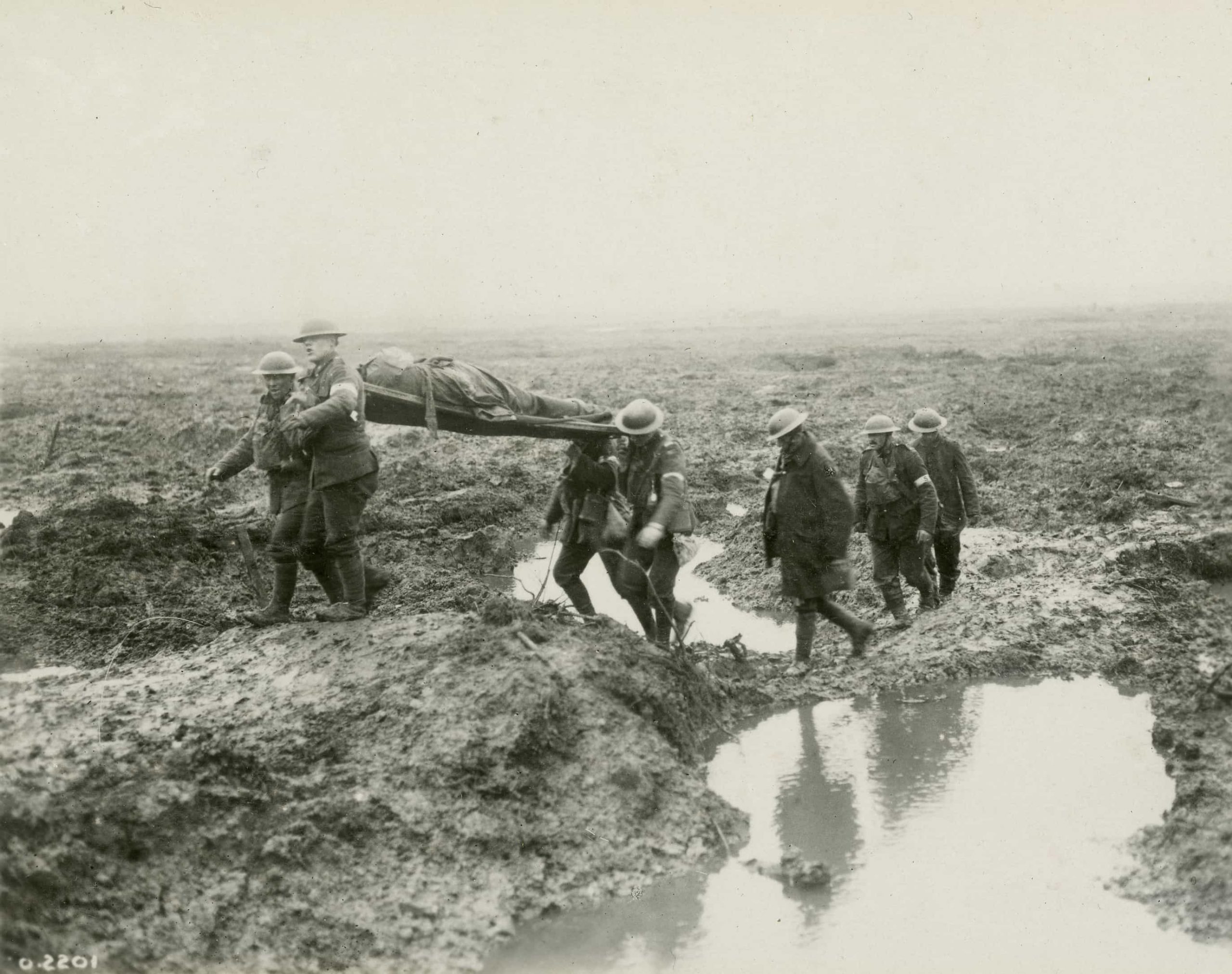
Service flags first appeared in the United States in the spring of 1917 and became popular in Canada later that year. They were introduced as a patriotic expression of pride, worry and loss. The practice continued during the Second World War.
The number of maple leaves on the flags indicated the number of people serving in the war. The Adie family displayed this flag in their home in St. Catharines, Ontario, to indicate that four sons — John, Robert, Archibald, and Allan — were on active duty overseas. Only Robert survived the war.
Family members often changed the colour of the leaves on service flags if loved ones were killed.

